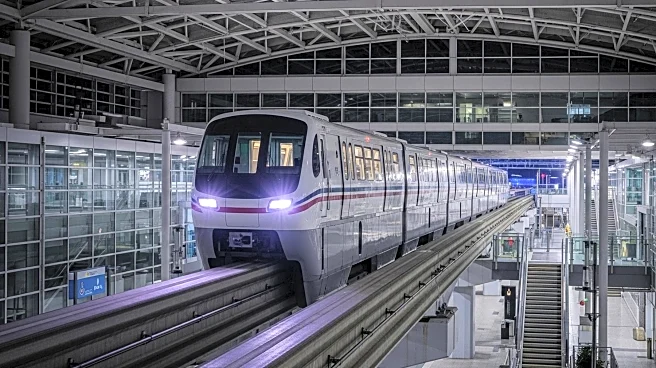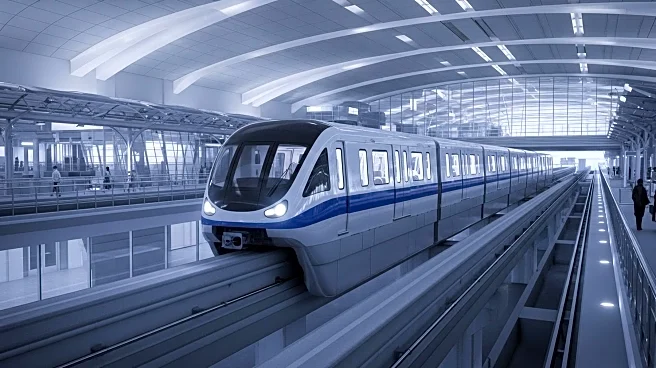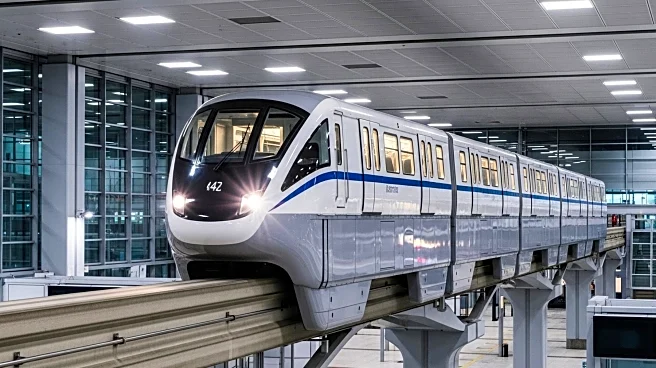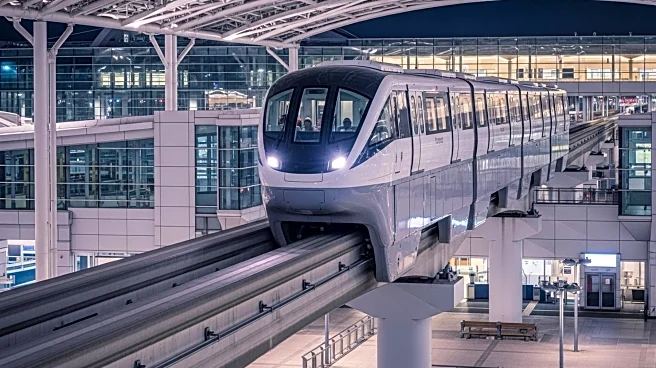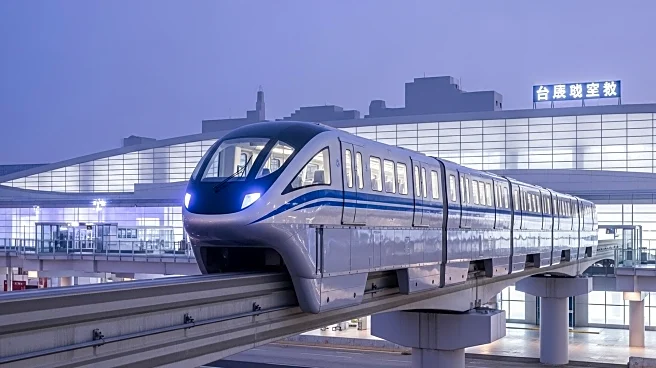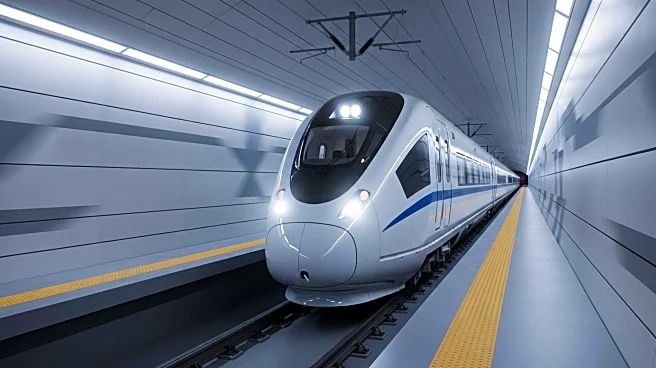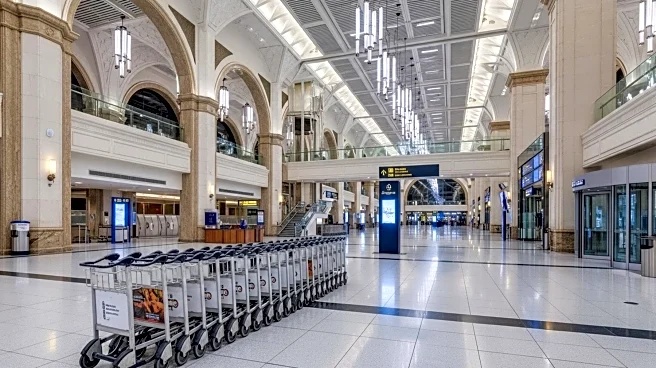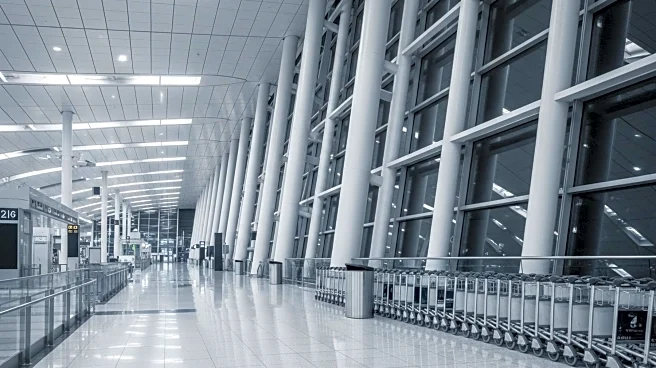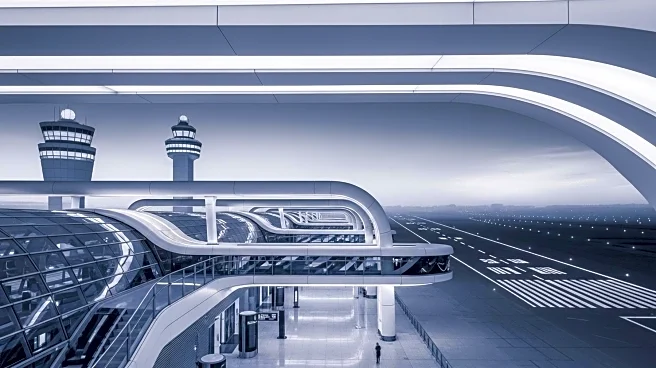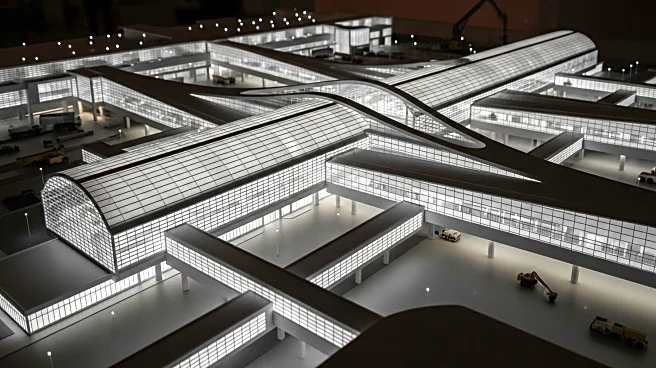What's Happening?
The Port Authority of New York and New Jersey has commenced the groundbreaking for a new AirTrain system at Newark Liberty International Airport. This development is part of a $3.5 billion investment aimed at modernizing the airport's infrastructure. The new AirTrain will replace the existing system, which has been operational since 1996 and is in need of significant maintenance. The upgraded system will feature seven five-car trains, each capable of carrying 135-160 passengers, effectively doubling the current capacity. The project is expected to be completed by early 2030, accommodating the anticipated 50% increase in passenger numbers by 2040.
Why It's Important?
The new AirTrain system is crucial for addressing the growing demand at Newark Liberty International Airport, which served nearly 50 million passengers in 2024. With passenger numbers projected to rise significantly, the enhanced capacity and modern technology of the new AirTrain will improve connectivity between terminals and streamline airport operations. This development is expected to bolster the airport's role as a major transportation hub, potentially boosting local economic activity and improving travel efficiency for millions of passengers annually.
What's Next?
The current AirTrain system will continue to operate until the new system is completed. As construction progresses, stakeholders including airport officials and local businesses will likely monitor the project's impact on airport operations and regional transportation networks. The Port Authority may also engage with community groups to address any concerns related to construction activities and ensure minimal disruption to airport services.
Beyond the Headlines
The modernization of Newark Liberty International Airport through the new AirTrain system reflects broader trends in infrastructure development aimed at enhancing transportation efficiency and sustainability. The project may set a precedent for similar upgrades at other major airports, highlighting the importance of investing in technology to meet future travel demands.

